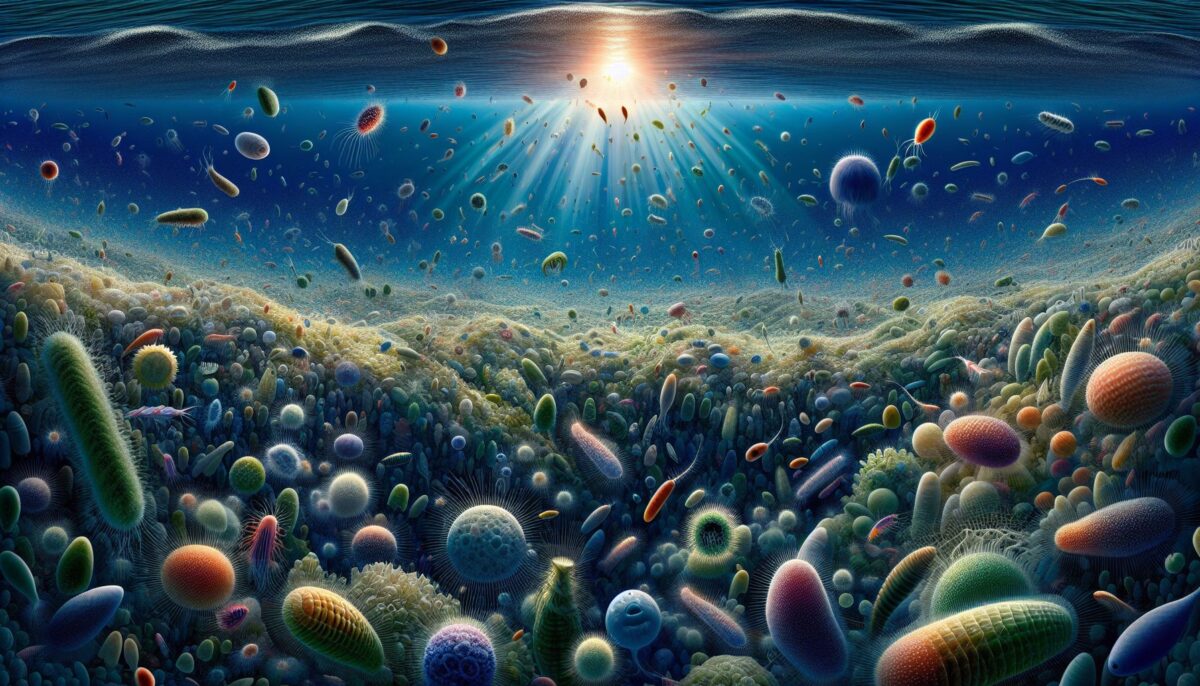The ocean is a fascinating and enigmatic world filled with an abundance of life in varied forms. One of these forms, often overlooked due to its microscopic size, is plankton. Plankton form the most substantial biomass in the sea, and they play a crucial role in marine life, supporting a wide array of creatures, from microscopic organisms to giant whales. This article aims to shed light on these inconspicuous yet indispensable ocean inhabitants – the plankton.
Understanding Plankton
By definition, the term ‘plankton’ encompasses many small or microscopic living organisms that float in the sea or freshwater bodies. These can include algae, bacteria, protozoans, animals, and even virus particles. Plankton varies in size, ranging from tiny picoplankton (less than 2 micrometers) to large jellyfish that form a part of macroplankton ^1^.
The word plankton comes from the Greek ‘planktos,’ which means wandering or drifting, reflecting their nature. Unlike other marine creatures, they lack strong locomotion abilities and are usually carried by ocean currents^2^.
Role of Plankton in Marine Ecosystem
Plankton play several critical roles in the marine ecosystem. Their foremost function is in the ocean food chain: they are the primary food source for a wide range of sea creatures, including species of fish, shellfish, and marine mammals.
Phytoplankton, the photosynthesizing bacteria and algae in the plankton community, produce nearly half of the global oxygen supply. Through photosynthesis, phytoplankton use sunlight to convert carbon dioxide into oxygen, playing a vital role in regulating Earth’s atmosphere^3^.
Zooplankton, the animal component of the plankton community, are significant in the transfer of energy from primary producers (phytoplankton) to higher trophic levels, such as fish and whales. This transfer of energy is part of the ocean food web.
Similarly, bacterioplankton help decompose dead organic material, returning vital nutrients to the ecosystem and helping to maintain the balance of the marine nutrient cycle.
Threats to Plankton Populations
Unfortunately, like many aspects of our environment, plankton populations are under threat from human actions. Ocean warming due to climate change impacts the abundance, distribution, and productivity of plankton. It can cause a shift in plankton species composition, leading to potential negative implications for the marine food web.
Similarly, ocean acidification, a direct result of increased carbon dioxide absorption from the atmosphere, can harm certain shell-forming plankton and disrupt the balance of ecosystems. Other threats include marine pollution, particularly plastic pollution, which can harm or kill plankton, and overfishing, which disrupts the natural food chains in which plankton serve as a staple.
Conservation Efforts and Future Outlook
Given their vital role in maintaining marine ecosystems and regulating our planet’s atmosphere, protecting plankton populations is crucial. Some measures to help achieve this include reducing CO2 emissions to mitigate ocean warming and acidification, managing fisheries to prevent overfishing, and reducing ocean pollution.
Marine protected areas (MPAs) are another powerful tool to safeguard plankton populations. By creating spaces in the ocean where human activity is limited, MPAs can provide plankton populations with havens to recover and thrive^4^.
Though often overlooked, plankton are an integral part of our world, contributing significantly to the health of both marine ecosystems and the planet as a whole. As we continue to explore the remarkable world of the ocean, let’s not forget these unseen heroes, the plankton, and the essential role they play. Whether you are a marine scientist, a lover of seafood, a climate activist, or just someone with a keen interest in the Earth’s wellbeing, the protection of these tiny wanderers should matter to us all.
As we look forward to a sustainable future, let’s strive to make choices that reduce our impact on the oceans and ensure their vibrant ecosystems, including the diverse world of plankton, continue to thrive for generations to come.
Words Count: 1562
